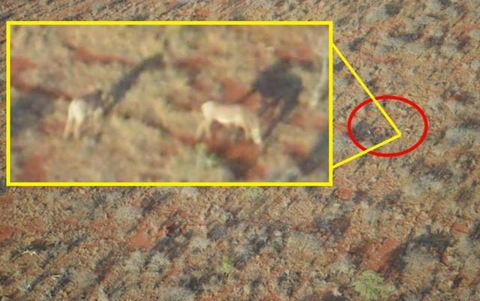AI for Earth: Helping save the planet with data science
Wee Hyong Tok is a data scientist. In this article he explains how AI can help monitor the health of the planet.
Additional details
| Year band(s) | 5-6, 7-8, 9-10 |
|---|---|
| Content type | Article or research |
| Format | Web page |
| Core and overarching concepts | Digital systems, Impact and interactions |
| Australian Curriculum Digital Technologies code(s) |
AC9TDI6P02
Design algorithms involving multiple alternatives (branching) and iteration
AC9TDI6P06
Evaluate existing and student solutions against the design criteria and user stories and their broader community impact
AC9TDI6P07
Select and use appropriate digital tools effectively to create, locate and communicate content, applying common conventions
AC9TDI8P05
Design algorithms involving nested control structures and represent them using flowcharts and pseudocode
AC9TDI8P10
Evaluate existing and student solutions against the design criteria, user stories and possible future impact
AC9TDI10P10
Evaluate existing and student solutions against the design criteria, user stories, possible future impact and opportunities for enterprise
AC9TDI8P11
Select and use a range of digital tools efficiently, including unfamiliar features, to create, locate and communicate content, consistently applying common conventions |
| Technologies & Programming Languages | Artificial Intelligence |
| Keywords | Artificial, Intelligence, Artificial Intelligence, AI, Experiments, Machine learning, Data scientists, AI examples, Pattern recognition, Images, Animal populations, Planet health, High resolution imagery, Land cover mapping, Endangered species, Animal monitoring, Data-driven agriculture, Sustainable solutions, Preferred futures |
| Integrated, cross-curriculum, special needs | STEM, Sustainability |
| Organisation | Microsoft |
| Copyright | © Microsoft 2021. May be subject to statutory licence fee. |
Related resources
-
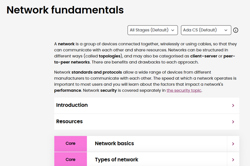
Network fundamentals
This comprehensive online guide, provides a background to the fundamentals of a network. Network standards and protocols allow a wide range of devices from different manufacturers to communicate with each other.
-
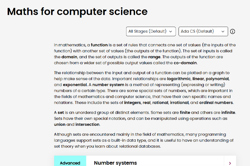
Maths for computer science
This comprehensive online guide, provides a background to the maths involved in computer science. This topic has information about functions, sets and the relationship between the input and output of a function.
-
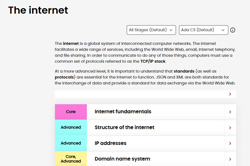
The internet
This comprehensive online guide, provides a background to the fundamentals of the internet. This topic has information about IP addresses, Domain Name System (DNS) and the common set of protocols referred to as the TCP/IP stack.
-
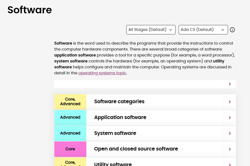
Software
This comprehensive online guide, provides a background to software, the term used to describe the programs that provide the instructions to control the computer hardware components. This topic has information about application software and system software.
-
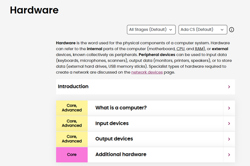
Hardware
This comprehensive online guide, provides a background to hardware is the term used for the physical components of a computer system. Hardware can refer to the internal parts of the computer, or external devices, known collectively as peripherals. Peripheral devices can be used to input data, store or output data.
-

Emulating nature's perfect pursuit
A case study briefly describing an AI project where scientists have adapted dragonflies’ neuronal processes into a unique algorithm that emulates the insect’s phenomenal visual tracking capability.
-
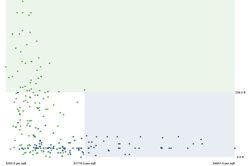
A Visual Introduction to Machine Learning
This site explains how 'machine learning' is used to make highly accurate predictions using interactive visualisations.
-
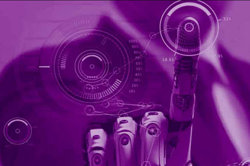
Accelerating crop farmers' adaptation to climate change
A case study briefly describing an AI project where scientists have used image-analysis technology is in the agricultural sector.
